- Submissions

Full Text
COJ Technical & Scientific Research
The Tactile Art on Inclusive Education
Luíza Rosa*
Brazil
*Corresponding author: Luíza Rosa, São Luís, Maranhão, Brazil.
Submission: September 08, 2018;Published: November 26, 2018

Volume1 Issue3 November 2018
Abstract
In Brazil, a set of legal regulations aimed at people with disabilities has been established over the years, aiming to expand the guarantees of social protection and promotion, such as Decree No. 6.949/2009, which grants constitutional amendment status to the United Nations Convention on the Rights of Persons with Disabilities (BRAZIL, 2011). Another important initiative was the launching of the National Plan for the Rights of Persons with Disabilities-Plano Viver Sem Limite (Decree No. 7.612/2011 (BRAZIL, 2011b), which is presented in four main areas of action: access to education, (IBGE, 2010) in developing countries such as Brazil, the who estimates that 1% and 1.5% of the population are visually impaired. The study or appreciation of works of art is almost always inaccessible to a large number of people with visual impairments. In this context, assistive technology is an essential tool to provide this part of the Brazilian population with the full exercise of their rights. assistive technology can be understood as the set of technologies developed to enable people with disabilities to daily life, providing them with an independent and inclusive life. Another great ally is three-dimensional modeling, also known as 3D modeling, which works on the construction of a three-dimensional object or model in a virtual environment, that is, with the help of the computer. It has become important for this work in the matter of providing the visually impaired with the appreciation of works of art through tactile contact. Thus, the work presented the development of three-dimensional graphic models based on works of art of national and world relevance that once printed three-dimensional (by 3D printer), allowed the tactile exploration and study by art lovers with visual deficiencies, through the so-called “reading with your hands”.
keywords Assistive technology; Three-dimensional modeling; Graphic design
Introduction
The accelerated development of computing technologies cause consequences as technological innovation to the project areas and the industry in recent decades. The new technological tools include not only the industry but contribute to the overall advancement of society to a more dignified world for all people, diminishing the differences and providing social inclusion. Currently, in the areas of Design and engineering, three-dimensional modeling has become standard procedure in many procedures, making rapid prototyping and digital manufacturing actions incorporated the latest project challenges. Second (Pupo, (Pupo, (2012) one of the main benefits of the development of rapid prototyping is the option to have the display as a great collaborator of spatial understanding, as well as the realization of the idea.
This new practice has caused huge impact on inclusion of people with visual impairment, by providing the possibility of holding a variety of tactile information such as works of art and characteristic elements of the culture of the people, admitting them in the universe cultural artistic way more believable. Although various methods have been proposed addressing the issue of relief construction of embossed surfaces (3D or 2.5D) from images only, only some address explicitly the problem of construction of models in high relief and paintings, more specifically, the needs of people with visual impairments.
Thus, the main objective of this work is to develop a systematic method for the semi-automatic generation of 2.5D or 3D models from art paintings and cultural acquis. Consequently, a number of specific procedures will be used to solve most of the typical problems that occur when dealing with the artistic representation of a scene.
The difference between the new digital models’ methods and traditional methods of modeling is that they intended not only to produce identical copies of the same product. On the contrary, are sufficiently adaptive systems to produce a wide spectrum of different shapes, enabling the faithful execution of the work chosen for prototyping and your representation of various presentation formats. As a result, there is growing attention among designers, engineers, teachers, students and professionals focused on the inclusion of people who are blind about the production potential of artistic and cultural elements to the perception through tactile exploration.
Problematic
The three-dimensional modeling is a topic discussed in several areas of knowledge and of various forms. Has provided the opportunity to implement ideas and multiply elements. However, so the image can be captured in all your message and assimilated by the observer, it is necessary to individualized analysis of the characteristics of the work, so that the visually impaired understand succession plans and what they represent. 3D modeling can be performed not only in computer graphics programs, but also with other features. Among them, homemade biscuit, clay in clay, plasticine, plaster and edible weight. It’s a sensory activity, which makes it especially the child with disabilities visual, cognitive, and affective development engine. However, it is necessary to present the information properly, in your entirety. Not enough froth forms, it takes consistency in respect of volumes and shapes. The song alive, the cylindrical shape, the farthest object has to be perceived by the person with visual impairment, so that the image has any sense, it is understood.
General Objectives
This work had as objective the development of a methodology to facilitate the inclusion of visually impaired students in classes of art education and art history, by transforming two-dimensional art works (paintings) in three-dimensional models, which allowed the tactile exploration and understanding of the image by the student. In this context, the specific objectives consisted in defining the selection criteria of the images to be sobrelevadas and the determination of the computational model of three-dimensional modeling, which allowed the transformation of the two-dimensional image in template three-dimensional.
State of the Art/Theoretical Framework
According to the World Health Organization (who), disability is the noun assigned to any loss or abnormality of a structure or psychological, physiological or anatomical function. Refers to the biology of the human being. In this context, the International Convention on the rights of the disabled person, signed at New York on 30 March 2007, brought a concept better suited to contemporary world: Art 1 (...) “People with disabilities are those who have longterm impediments physical, mental, intellectual or sensory, which, in interaction with various barriers may obstruct your full and effective participation in society on equal terms with other people”.
The person with a disability can has single or multiple disabilities disability. The various disabilities can join in several groups, among them there is the visual impairment that, in accordance with Decree No. 3,298/99, modified by Decree No. 5,296/2004, blindness visual acuity is equal to or less than 0.05 in the best eye, with best optical correction; the low vision, meaning visual acuity between 0.3 and 0.05 in the better eye with best optical correction. Simply put, the term refers to the loss or reduction of visual ability in irreversible character due to congenital or hereditary causes, even after clinical treatment and/or surgery and use of conventional glasses.
The decrease in visual response according to criteria established by the World Health Organization (who) can be mild, moderate, severe, profound (the Group of subnormal vision or low vision) and complete lack of visual response (blindness). According to the data of the Census 2010, conducted by the Brazilian Institute of geography and statistics-IBGE, more than 45.6 million Brazilians, approximately 23.9% of the population, declared to possess some type of disability. The visual impairment, reaching 35.8 million people in 2010, was the most affected both men, with 16%, as women, with 21.4%. The visually impaired are facing particular difficulties capable of limiting the practice of activities or restrict participation in social, economic and cultural life. To continue your daily actions, count with the help of normovisuais guides, walking sticks and seeing-eye dogs. They also have a way of writing and reading, Braille system.
According to the technical AIDS Committee-CAT, PORTARIA° 142/2006, “assistive technology is an area of knowledge, interdisciplinary, feature products, resources, methodologies, strategies, practices and services that aim to promote the functionality, related to activity and participation of people with disabilities, disability or reduced mobility, aiming your autonomy, independence, quality of life and social inclusion”. Threedimensional modeling, also known as 3D modeling, is an area of computer graphics, which has as its purpose the generation of three-dimensional entities, generation of static scenes (rendering), motion pictures (animation), with or without interactivity. It is the job of building an object, shape, character or scenario in a virtual environment, that is, with the aid of the computer by means of advanced computational tools and targeted as software or computer programs 3D graphics. According to Santos (2003), the three-dimensional models allow “the confrontation of projects with different forms of representations, from the same point of view and under various angles”. In this way, the work presented the preparation of three-dimensional graphics models of art works, considering the technical characteristics of the painting, which once produced by 3D printing, enable people with visual impairment or total tactile contact and partial appreciation of works of art.
Results and Discussion
This work contributes to the inclusion of students with visual impairments in the study and assessment of pictorial arts, causing them to meet, through tactile exploration, some relevant artworks to art movements covered in classes in more courses and levels. The competing studies so that the methodology developed is presented in favour of running both the simplicity of the procedures in the implementation process of three-dimensional models as the possibility of running them with the resources own school. From the “reading with your hands”, through the tactile contact, the person with visual impairment will be participating in inclusive action, that is by the way a right, but is not always guaranteed. At the moment two works were chosen.
The choice of the first work (Figure 1), “the mermaid” of Alfredo Volpi, for the development of three-dimensional graphic model came about because of a few elements and simplicity in work, in which it was applied new techniques in the development of the model. The three-dimensional model (Figure 2) has been prepared taking into account the elements present on the site. The contours generate the image of several Moons in a sky that was evidenced in three-dimensional modeling to that when a person with visual impairment touch the model notice relief of strokes and according to your repertoire can understand the figures are being represented.
Figure 1:”The mermaid” of alfredo volpi.
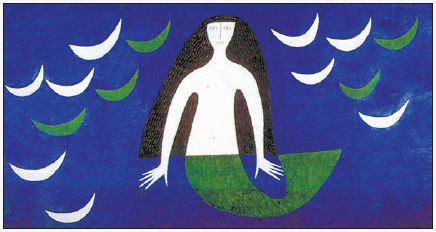
Figure 2:Three-dimensional modeling of the work “the mermaid”.

Figure 3:“Great festive facade” of alfredo volpi.
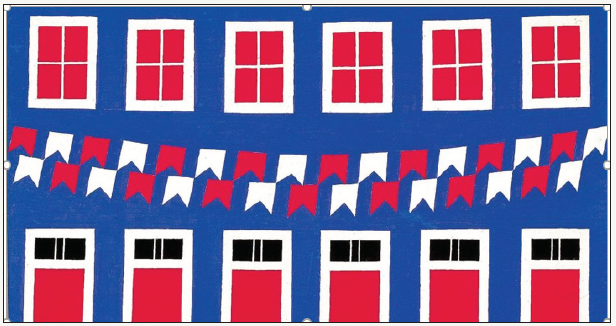
The “Great Festive Facade” (Figure 3), Alfredo Volpi, was also entered on account of their characteristics that enabled the exploration of new techniques. It is noticed that the painter liked to play a game of colors and shapes and that “Flags” was the most devoted of your life. In this way, the work was chosen because of your consecration and cultural contribution. The three-dimensional model developed in the chest (Figure 4), from the second work, followed the same reasoning the first model created. Another feature was used for testing and the like.
Figure 4:Three-dimensional modeling in the chest of the book “great festive facade”.
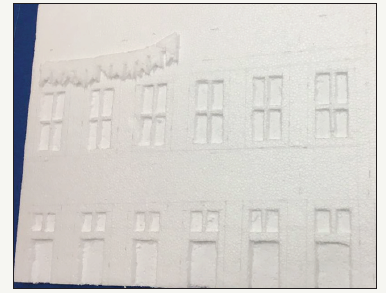
Figure 5:Set of portuguese tiles IXX.
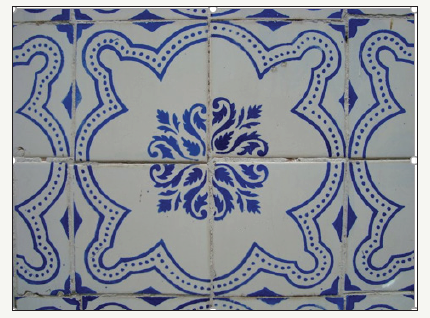
Figure 6:Three-dimensional modeling of the tile.
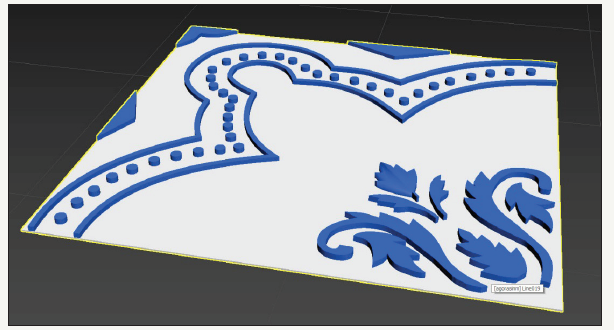
The use of Styrofoam for running 2 models, 5d is given as an option of lower cost and easier implementation, by not requiring knowledge and uses of software and electronic equipment. Is a possibility and awakens the use of manual activities. (Figure 5) depicts a tile found in the Centre of São Luís-Maranhão, Brazil. The development of three-dimensional graphic model came about due to continuity of traces of work that make up a drawing, thus facilitating the understanding of same. The three-dimensional model (Figure 6) Figure 7 has been prepared taking into account the intentions of the author, according to the characteristics observed in the work. When transformed into three-dimensional, the touch perception is sharper, facilitating the understanding of people with low vision.
Figure 7:Detailed technical breakdown of the tile.
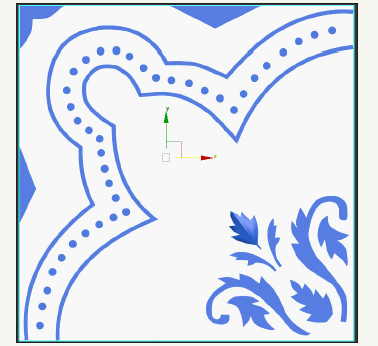
Conclusion
The conflict between the qualification of an action as affordable or not accessible, arises from social standards due to the use of models considered typical and related to use by most people. The practice at school does not differ. The models of conduct applied to formal education are, in your vast majority, still based on the profile of the student who has no physical or mental disability. The proposal of the inclusive school takes into account the challenge that involves the coexistence among unequal and the need to modify their actions in order to contemplate all and their differences. In the study of art there is still a distance between speech and practice of school inclusion, although the field of museology has already incorporated the Inclusive Museum designation. The proposal presented in this work is geared towards minimizing this abscissa, allowing visually impaired students access to some works of art are relevant to the study of art. This study was supported by threedimensional modeling for computer associated with the research of the characteristics of each work, as it pertains to your texture, volume and depth. In this way, contributed to facilitate and simplify the process of transformation of a two-dimensional work to a threedimensional model, offering more works of art at a low cost for the inclusion of people with visual impairment.
References
- ATA VII Technical Aid Committee (CAT). National Coordination to integration of Disabled Person (CORDE)-Special Secretariat for human rights-Presidency of the Republic.
- (2001)Presidency of the Republic. Convention on the rights of persons with disabilities: Optional protocol to the convention on the rights of persons with disabilities-legislative Decree No. 186, 09 July 2008, and Decree No. 6,949, 25 August 2009. 4. ed. Brasília: Secretary of Human Rights, the National Secretariat of promotion of the rights of Person with disabilities, 2011.
- (2011) Establishes the national plan on the rights of the disabled person-live without limit. Decree No. 7, Brazil.
- IBGE (2012) Census 2010: General characteristics of the population, Religion and People with disabilities. Rio de janeiro: IBGE.
- (2009) Chagas, Cristiane Santana. Art and education: the contribution of art to children’s education and to the early years of elementary school. Monography presented the Course of pedagogy of the Universidade Estadual de Londrina, Public university in Londrina, Brazil.
© 2018 Luíza Rosa. This is an open access article distributed under the terms of the Creative Commons Attribution License , which permits unrestricted use, distribution, and build upon your work non-commercially.
 a Creative Commons Attribution 4.0 International License. Based on a work at www.crimsonpublishers.com.
Best viewed in
a Creative Commons Attribution 4.0 International License. Based on a work at www.crimsonpublishers.com.
Best viewed in 







.jpg)






























 Editorial Board Registrations
Editorial Board Registrations Submit your Article
Submit your Article Refer a Friend
Refer a Friend Advertise With Us
Advertise With Us
.jpg)






.jpg)














.bmp)
.jpg)
.png)
.jpg)










.jpg)






.png)

.png)



.png)






